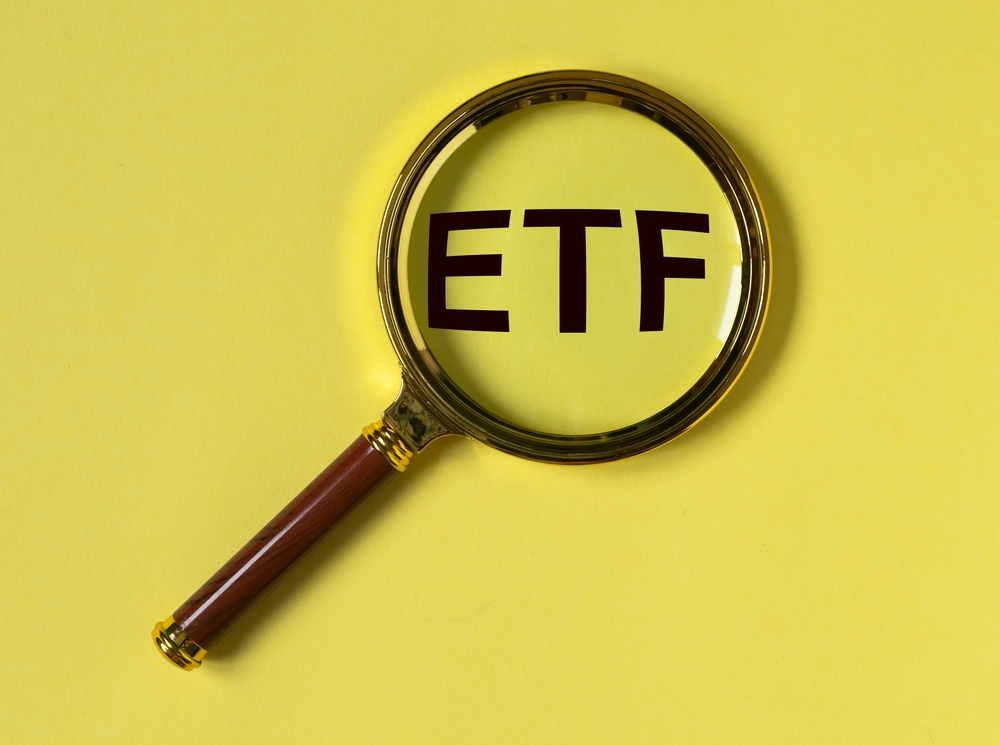After gathering record breaking investor inflows in 2024, participants across Europe’s ETF industry are gazing into their crystal balls at the start of the new year to anticipate the key challenges and trends that will have an influence on the success of their businesses over the next 12 months and beyond.
Doubts over whether the US stock market can continue with its bull run after a second consecutive annual gain of more than 20% and uncomfortable questions over the threat of inflation pressures for both equities and bonds will be prominent in the minds of investors worldwide.
Along with shifts in market conditions and investors' risk appetite, changes in regulations and product innovation choices are just some of the important considerations for ETF industry participants to ponder at the start of 2025.
The race to capture retail uptake
Encouraging greater participation by retail investors in Europe’s investment markets is a key objective for policymakers who want to help citizens prepare better for retirement.
The UK’s Financial Conduct Authority (FCA) announced last month that it wanted to make “significant changes” to the rules on information disclosures for investors for a range of financial products including ETFs and investment trusts.
The FCA believes the current EU disclosure rules covering UCITS and PRIIPS (packaged retail and insurance-based investment products) cause confusion among investors even though the UK regulator played a large role before Brexit in the development of these standards. The new simplified UK rules are aimed at delivering better outcomes to investors and to encourage more savings for retirement.
Across Europe, around a third of the financial assets owned by households are held in bank accounts that provide relatively low yields. This pot of money – estimated at around €11.4tn by the London-based consultancy New Financial - is a potentially huge prize for asset managers if it can be unlocked and moved into investment products.
One example of how these assets can be unlocked is the rapid growth in the popularity of low-cost ETF savings plans in Germany, particularly among younger investors. Asset managers are likely to look for more partnerships with e-brokers and wealth managers that offer ETF savings plans to expand this distribution channel across other countries in the EU.
More entrants to Europe's crowded ETF market
There are currently 105 asset managers offering European listed ETFs, according to the consultancy ETFGI. This already highly competitive space is likely to become even more congested in 2025 with more new entrants, a topic that ETF Stream will explore in greater depth in the coming weeks.
Asset managers that have so far resisted a move into ETFs cannot have failed to register the ongoing shift by investors away from traditional actively managed mutual funds that try to pick winning stocks, a trend that has been driving profound changes across the investment industry since the global financial crisis in 2008. This still leaves open many difficult strategy questions for potential new ETF industry entrants about how best to spread their limited resources across their products ranges and target client groups.
White-label platforms operating in Europe, such as HANetf, and consultants including ETFGI, continue to see high levels of interest from a variety of managers that are considering how they might best tackle established European competitors.
Support for even more competition among ETF providers is also evident among regulators. A new door to Europe’s ETF industry was opened by the Central Bank of Ireland (CBI) with the announcement in September that ETF share classes were now permitted to be established within existing Irish domiciled mutual funds. This removes the need for asset managers to make potentially confusing changes to fund names or to consider establishing a parallel ETF platform alongside their mutual fund range.
Athanasios Psarofagis, ETF analyst at Bloomberg Intelligence, says that some US asset managers currently debating the possibility of venturing into the European ETF market might decide to delay given the extraordinary rate of ETF adoption in their home American market.
“Smaller US ETF providers are already facing challenges meeting the needs of their existing US clients. Moving into Europe would mean a lot more work with no certainty of success. Or they might just skip a move to Europe in favour of launching products in Asia,” says Psarofagis.
Addressing Europe’s fragmented ETF market
Participants in Europe’s ETF ecosystem have long grumbled that the fragmentation of ETF trading activity across a wide variety of national exchanges and other trading venues is a key problem holding back wider ETF adoption.
An estimated 80 per cent of ETF trading activity in Europe is taking place outside of so called “lit” exchanges where there is greater transparency on pricing, according to Sébastien Lemaire, head of ETF research at Société Générale.
This is creating a false impression that ETF liquidity is poor because many trades are not visible on the lit order book. It also leads to increased costs for ETF investors.
But addressing fragmentation is proving to be a slow and frustrating process for both market participants and regulators. The CBI said in December that it would be desirable for ETF managers to build relationships with a wider range of market makers and authorised participants to boost competition and to ensure that ETF trading remains orderly during any periods of elevated market stress.
Another important proposal by regulators is to speed up the time permitted to settle financial transactions from two days to just one. However, the move to a so-called “T+1” standard is not scheduled to come into force until the fourth quarter of 2027.
Arguably the clearest illustration of the fragmentation problem is that around half of the universe of more than 3,000 exchange traded products listed in Europe hold assets of less than $50mn, according to ETFGI. This suggests that a large swath of ETPs are unprofitable but managers still remain stubbornly reluctant to close subscale products.
“Size matters for the profitability of ETFs,” says Lemaire.
Further consolidation through the mergers and acquisitions of ETF businesses seems likely following the examples of the deals involving Amundi and Lyxor, Invesco and Source, Janus Henderson and Tabula and most recently BNP Paribas and Axa Investment Managers.
“M&A may not stop,” says Lemaire.
Growing cryptocurrency divide between Europe and the US
Some asset managers in Europe will have looked with envy at the multi-billion dollar customer inflows registered by US listed cryptocurrency exchange traded products in 2024. But Europe and the US now appear to be travelling along very different pathways in their approaches to regulating cryptocurrencies, a divergence that looks likely to widen during 2025.
President-elect Donald Trump has promised to help the US become the “crypto capital of the planet” and nominated the crypto advocate Paul Atkins as head the Securities and Exchange Commission. Atkins is widely expected to ensure that the US regulator adopts a friendlier stance towards to crypto, marking a distinct change from the critical approach of the SEC under Gary Gensler.
No such change appears forthcoming in Europe where the attitude of regulators towards crypto remains far more cautious.
The European Securities and Markets Authority (EMSA) issued a blunt warning in December cautioning investors against being caught up in the hype surroundings cryptocurrencies after the price of Bitcoin surged to a record $106,500 following Trump’s victory in the US presidential election.
Stricter European rules covering crypto have just come into force in December with the the Markets in Crypto-Assets Regulation (MiCA) in an effort to improve standards across the sector and to strengthen protection for investors against fraudsters. Any asset manager considering whether to launch a crypto exchange traded product in Europe will now face a more difficult choice in deciding whether it is worth incurring the expense and resource implications of complying with MiCA in the pursuit of new assets.
Greater focus on greenwashing and ESG standards
ETF managers will have to react to new rules by European policymakers who desperately want more private investment to accelerate the transition to a greener economy which is less reliant on environmentally damaging fossil fuels.
New EU guidelines came into force in November 2024 for investment funds, including ETFs, that use environmental, social and governance (ESG) or sustainability-related terms as part of their names. Such funds must now ensure that 80 per cent of their assets are used to meet ESG or sustainable investment objectives.
But policymakers want to go further to combat “greenwashing” when false claims about environmental benefits are made by providers of financial products. Additional changes concerning the categorisation of investment funds more broadly are needed to address greenwashing, according to Maria Luís Albuquerque, the new EU Commissioner for Financial Services and the Savings and Investments Union. An expert group that advises the European Commission has recommended the introduction of four new investment categories: “sustainable”, “transition”, “ESG collection” and “unclassified products”.
This would replace the existing framework which has proved bewildering for many investors as funds are currently split into categories known as “Article 6”, “Article 8” or “Article 9” depending whether or not their strategies have environmental characteristics.
Athanasios Psarofagis, ETF analyst at Bloomberg Intelligence, says he expects to see more investor interest in ESG ETFs that focus on themes such as solar energy or nuclear power or electric vehicles. But this could also result in a weakening in demand for broad ESG ETFs that are designed to minimise any performance divergence from a broad market benchmark, such as the S&P 500, while also delivering environmental benefits, such as reductions in carbon pollution.
Sébastien Lemaire, head of ETF research at Société Générale, says many investors have been disappointed by the performance of some broad ESG ETFs compared with their parent market capitalisation weighted benchmarks.
Lemaire explains that ESG cannot be considered as a factor, such as value or size or dividends, that can generate additional returns. Instead, ESG strategies suffer indirect biases such as under exposure to certain sectors such as energy or defence.
"This has resulted in examples of underperformance that have left clients feeling disappointed,” says Lemaire.
The challenge facing asset managers will be marrying regulators’ requirements for products that meet stricter ESG standards while also satisfying clients' performance expectations.


